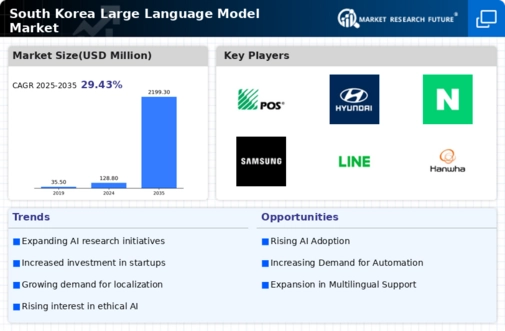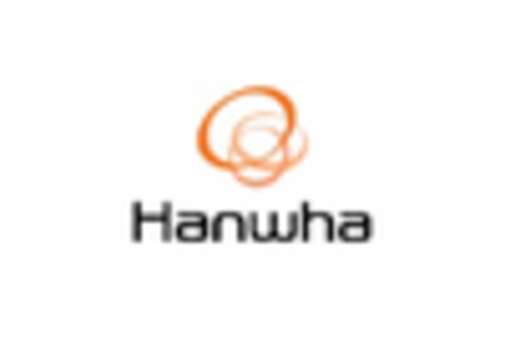Rising Demand for Automation
The large language-model market in South Korea is experiencing a notable surge in demand for automation across various sectors. Industries such as finance, healthcare, and customer service are increasingly integrating language models to enhance operational efficiency. For instance, the automation of customer interactions through chatbots powered by language models is projected to reduce operational costs by up to 30%. This trend indicates a shift towards leveraging AI technologies to streamline processes and improve service delivery. As businesses seek to optimize their workflows, the large language model market is likely to grow due to the demand for innovative solutions that can handle complex tasks with minimal human intervention..
Growing Investment in AI Research
Investment in artificial intelligence research is a critical driver for the large language-model market in South Korea. The government and private sector are allocating substantial resources to AI initiatives, fostering an environment conducive to innovation. In 2025, it is estimated that AI-related investments could reach approximately $2 billion, highlighting the commitment to advancing AI technologies. This influx of funding is likely to accelerate the development of language models, enhancing their capabilities and applications. As research progresses, the large language-model market is expected to benefit from breakthroughs that could redefine how businesses utilize AI in their operations.
Emergence of AI Ethics and Governance
The emergence of AI ethics and governance is shaping the large language-model market in South Korea. As the use of AI technologies becomes more prevalent, there is a growing emphasis on responsible AI practices. Stakeholders are increasingly concerned about issues such as data privacy, bias, and transparency in AI systems. This focus on ethical considerations is prompting companies to adopt frameworks that ensure compliance with regulatory standards. As a result, the large language-model market is likely to evolve, with an emphasis on developing models that are not only effective but also align with ethical guidelines. This shift may influence consumer trust and acceptance of AI technologies in various sectors.
Advancements in Natural Language Processing
Technological advancements in natural language processing (NLP) are significantly influencing the large language-model market in South Korea. Innovations in machine learning algorithms and data processing capabilities are enabling the development of more sophisticated language models. These advancements allow for improved understanding and generation of human-like text, which is crucial for applications in content creation, translation, and sentiment analysis. The market is expected to grow as companies invest in NLP technologies, with projections indicating a compound annual growth rate (CAGR) of around 25% over the next five years. This growth reflects the increasing reliance on AI-driven solutions to meet the evolving demands of consumers and businesses alike.
Increased Focus on Multilingual Capabilities
The large language-model market in South Korea is witnessing an increased focus on multilingual capabilities. As businesses expand their reach to global markets, the demand for language models that can understand and generate text in multiple languages is growing. This trend is particularly relevant in South Korea, where diverse linguistic needs exist. Companies are seeking language models that can cater to both local dialects and international languages, thereby enhancing communication and customer engagement. The ability to provide multilingual support is likely to become a competitive advantage, driving further investment in the large language-model market as organizations strive to meet the needs of a global audience.


















Leave a Comment